Items
Site
The Medicine Chest
keywords is exactly
sea
-

#165317 Dipsy
In 2015, Conservation International scientists in Indonesia attached satellite transmitters to the dorsal fins of whale sharks to learn more about their migratory movements and diving behavior. Dipsy, a 4.57-meter male, spent much of his 17-month deployment in Triton Bay but also visited the Aru and Kei Islands – one of our first Kaimana whale sharks to explore the Arafura Sea – before returning to Kaimana. He hit a maximum depth of 625 meters. -

#165321 Yoda
In 2015, Conservation International scientists in Indonesia attached satellite transmitters to the dorsal fins of whale sharks to learn more about their migratory movements and diving behavior. Yoda had a lengthy 26-month deployment, spending all of that time in Cendrawasih Bay. The 4.83-meter male dove to a maximum depth of 1,375 meters, reaching the bottom of the bay at one of its deepest points. -

#151097 Fijubeca
In 2015, Conservation International scientists in Indonesia attached satellite transmitters to the dorsal fins of whale sharks to learn more about their migratory movements and diving behavior. At just 3 meters in length (about 10 feet), Fijubeca logged an impressive 9,000 kilometers (5,592 miles) during his deployment. He visited eight of the Bird’s Head Seascape's marine protected areas (MPAs), reaffirming the placement of MPAs as related to megafauna migratory routes. -

#168184 Sunbridge
In 2015, Conservation International scientists in Indonesia attached satellite transmitters to the dorsal fins of whale sharks to learn more about their migratory movements and diving behavior. Sunbridge was one of our first sharks tagged in Saleh Bay, Sumbawa, where he spent his entire 14-month deployment. Though this 6.23-meter male spent a fair bit of time on the surface, he frequently visited the bay's bottom at a maximum depth of 350 meters. -

#165905 Sebastian
In 2015, Conservation International scientists in Indonesia attached satellite transmitters to the dorsal fins of whale sharks to learn more about their migratory movements and diving behavior. Sebastian spent most of his 27-month deployment in Cendrawasih Bay but also recorded a visit to the Mapia atoll and ventured past Biak into PNG coastal waters. He eventually returned to Cendrawasih, where his tag's battery expired, having logged a maximum dive of 1,125 meters. -

Navigation chart, Micronesia
"Early Pacific seafarers did not have scientific instruments or conventional European-style maps to voyage to, and settle, the thousands of islands of Micronesia and Polynesia. Instead they used the movement of the sea, the direction of the wind, the position of the sun and stars, and the flight of birds. This is a navigation chart, obtained by Georg Irmer, the Governor of the Marshall Islands from Chief Nalu of Jaluit atoll in 1896. The strips of wood, bound by cane, represent the currents and winds, and the six small, white shells represent islands". -
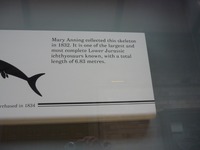
A label in the Natural History Museum
A label in the Natural History Museum accompanying a discovery made by Mary Anning. -

Diving the Tacoma Narrows Bridge
"All that debris still remains under the bridge for the most part, and it has become a dive site. It is a very difficult dive site to get to because of the swiftly moving water and the very short period of slack time. Nature in this area has just a tremendous ability to take over. You have a man-made structure like the Tacoma Narrow Bridge that collapsed into the water. Very quickly, the ocean took it over and made it part of the habitat". Extract from the voiceover of trailer for 700 Feet Down (a documentary about the Tacoma Narrows Bridge told through witnesses of the bridge’s 1940 demise as well as intrepid divers exploring a reef of wreckage, ultimately reflecting on how history influences the present) -

The sea
"As I stood there, suddenly, no, not suddenly, but in a sort of driving heave, the whole sea surged, it was not a wave, but a smooth rolling swell that seemed to come up from the deeps, as if something vast down there had stirred itself, and I was lifted briefly and carried a little way toward toward the shore and then set down on my feet as before, as if nothing had happened. And indeed nothing had happened, a momentous nothing, just another of the great world's shrugs of indifferennce (Banville 2005: 26) -

Simone
A year after Simone's death from cancer, Cousteau announced that he had been having an affair with a woman, Francine Triplet, for over a decade. He also had two children with her, Diane and Pierre-Yves. -

A perfect day for bananafish
Extract from J.D. Salinger's 'For Esmé - With Love and Squalor' in which Seymour Glass interacts with a young girl while swimming in the ocean on holiday. “Miss Carpenter. Please. I know my business,” the young man said. “You just keep your eyes open for any bananafish. This is a perfect day for bananafish.” “I don’t see any,” Sybil said. “That’s understandable. Their habits are very peculiar.” He kept pushing the float. The water was not quite up to his chest. “They lead a very tragic life,” he said. “You know what they do, Sybil?” She shook her head. “Well, they swim into a hole where there’s a lot of bananas. They’re very ordinary-looking fish when they swim in. But once they get in, they behave like pigs. Why, I’ve known some bananafish to swim into a banana hole and eat as many as seventy-eight bananas.” He edged the float and its passenger a foot closer to the horizon. “Naturally, after that they’re so fat they can’t get out of the hole again. Can’t fit through the door.” “Not too far out,” Sybil said. “What happens to them?” “What happens to who?” “The bananafish.” “Oh, you mean after they eat so many bananas they can’t get out of the banana hole?” “Yes,” said Sybil. “Well, I hate to tell you, Sybil. They die.” “Why?” asked Sybil. “Well, they get banana fever. It’s a terrible disease.” “Here comes a wave,” Sybil said nervously. “We’ll ignore it. We’ll snub it,” said the young man. “Two snobs.” He took Sybil’s ankles in his hands and pressed down and forward. The float nosed over the top of the wave. The water soaked Sybil’s blond hair, but her scream was full of pleasure. With her hand, when the float was level again, she wiped away a flat, wet band of hair from her eyes, and reported, “I just saw one.” “Saw what, my love?” “A bananafish.” “My God, no!” said the young man. “Did he have any bananas in his mouth?” “Yes,” said Sybil. “Six.” The young man suddenly picked up one of Sybil’s wet feet, which were drooping over the end of the float, and kissed the arch. “Hey!” said the owner of the foot, turning around. “Hey, yourself! We’re going in now. You had enough?” “No!” “Sorry,” he said, and pushed the float toward shore until Sybil got off it. He carried it the rest of the way. (Salinger 1986: 20-21). -

Kuhn's Jellyfish
Kuhn's "example illustrates how the entrenched expectations of experimental outcomes and prescribed instrumental functions of an insider’s view of the laboratory and its equipment can pose a threat to new discoveries. The circumstances that enabled Roentgen (an insider) to first notice these new rays are not clear, but Kuhn proposes that the occurrence of anomaly enables discovery and that Roentgen’s ‘recognition that nature has somehow violated the paradigm-induced expectations that govern normal science’ (1970: 52–3) was important. Kuhn emphasises that Roentgen valued the anomaly instead of ignoring it – a vital step in the process of discovery" (Liebenberg 2021: 114). -

Jellyfish
A detail from an X-ray of my jaw -
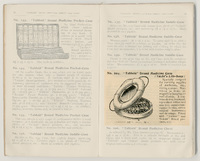
The Memory of Water
"Of the cases used during Stanley's famous travels, the "Rear Guard" 'Tabloid' Medicine Chest is worthy of special mention. The chest remained in the swamp regions of the Aruwhimi for nearly four years, and more than once was actually submerged in the river. Notwithstanding these mishaps, when the chest was brought back to London and the remaining contents tested by the Official Analyst of the Lancet, they were found to have retained their efficacy "(BWC 1934: 5). -

Seeds of Change
"'Seeds of Change' is an ongoing investigation based on original research of ballast flora in the port cities of Europe. Projects have been developed for Marseilles, Reposaari, Dunkirk, Exeter and Topsham, Liverpool and Bristol. Material such as stones, earth, sand, wood, bricks and whatever else was economically expedient was used as ballast to stabilize merchant sailing ships according to the weight of the cargo. Upon arrival in port, the ballast was unloaded, carrying with it seeds native to the area where it had been collected. The source of these seeds can be any of the ports and regions (and their regional trading partners) involved in trade with Europe. The botanist, Dr. Heli Jutila, an expert on ballast flora writes, 'Although seeds seem to be dead, they are in fact alive and can remain vital in soil for decades, and even hundreds of years in a state of dormancy'. Seeds contained in ballast soil may germinate and grow, potentially bearing witness to a far more complex narrative of world history than is usually presented by orthodox accounts" (Alves 2021). -
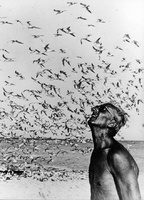
The Sea Birds of Isabella
Aired between 1968 and 1976, 'The Undersea World of Jacques Cousteau' was a documentary television series about underwater marine life. It was directed by Alan Landsburg and hosted by French filmmaker, researcher, and marine explorer Jacques Cousteau. In the 33rd episode of the series, titled 'The Sea Birds of Isabella', the crew journeys off the coast of Mexico to an island to study its tropical birds. Three years after it was shown, Cousteau's son, Phillipe (then aged 38) died trying to land his seaplane, called the Flying Calypso, on the Taos River in Portugal. -
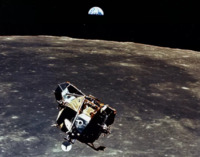
The Eagle has landed (Apollo 11 Lunar Module Ascent Stage Photographed from Command Module)
The Apollo 11 Lunar Module ascent stage, with Astronauts Neil A. Armstrong and Edwin E. Aldrin Jr. aboard, is photographed from the Command and Service Modules (CSM) during rendezvous in lunar orbit. The Lunar Module (LM) was making its docking approach to the CSM. Astronaut Michael Collins remained with the CSM in lunar orbit while the other two crewmen explored the lunar surface. The large, dark-colored area in the background is Smyth's Sea, centered at 85 degrees east longitude and 2 degrees south latitude on the lunar surface (nearside). This view looks west. The Earth rises above the lunar horizon. -

Dung beetles
Like ancient seafarers, dung beetles can navigate using the starry sky and the glow from the Milky Way. After locating a fresh pile of feces, dung beetles will often collect and roll away a large piece of spherical dung, then climb on their dung balls and dance around in circles before taking off. This dance is not one of joy, however; the insects are watching the sky to get their bearings. -

The Memory of Water
Of the cases used during Stanley's famous travels, the Rear Guard 'Tabloid' Medicine Chest is worthy of special mention. The chest remained in the swamp regions of the Aruwhimi for nearly four years, and more than once was actually submerged in the river. Notwithstanding these mishaps, when the chest was brought back to London and the remaining contents tested by the Official Analyst of the Lancet, they were found to have retained their efficacy (BWC 1934: 5). -
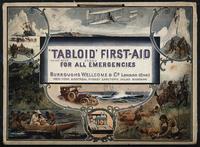
Situations in which a Tabloid medicine chest made by BWC would be useful.
Situations in which a Tabloid medicine chest made by Burroughs Wellcome and Co. would be useful. Colour process print, ca. 1909. The Tabloid medicine chests were distributed free to well known explorers such as H.M Stanley and Ernest Shackleton. The word 'tabloid' was coined by the firm of Burroughs Wellcome and registered as a trademark.


